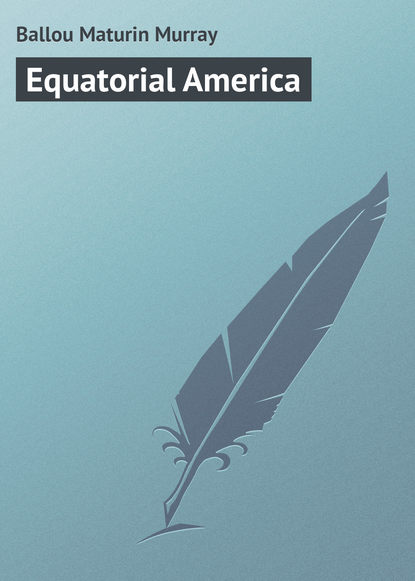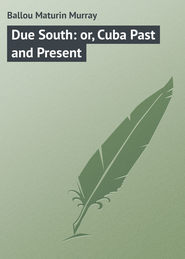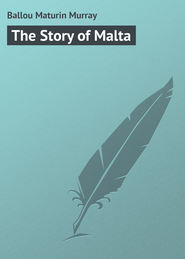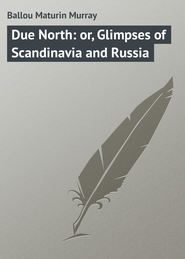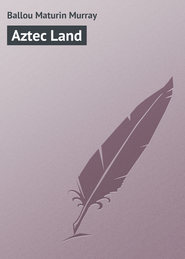По всем вопросам обращайтесь на: info@litportal.ru
(©) 2003-2024.
✖
Equatorial America
Настройки чтения
Размер шрифта
Высота строк
Поля
The heavy alcoves of the old stone bridge at Lima are appropriated by the fruit women, whose tempting display forms glowing bits of color. The thorough-*fares are crowded by itinerant peddlers of all sorts of merchandise. Milk-women come from the country, mounted astride of small horses or donkeys; water carriers trot about on jackasses, sitting behind their water jars and uttering piercing cries; Chinese food venders, with articles made from mysterious sources, balance their baskets at either end of long poles placed across their shoulders; the lottery-ticket vender, loud voiced and urgent, is ever present; newspaper boys, after our own fashion, shout "El Pais," or "El Nacional;" chicken dealers, with baskets full of live birds on their head and half a dozen hanging from each hand, solicit your patronage; beggars of both sexes, but mostly lazy, worthless men, feign pitiful lameness, while importuning every stranger for a centavo; bright, careless girls and boys rush hither and thither, full of life and spirit, – black, yellow, brown, and white, all mingling together on an equal footing. The absence of wheeled vehicles is noticeable, the tramway-cars gliding rapidly past the pedestrians, while pack-horses and donkeys transport mostly such merchandise as is not carried on the heads of men and women. Of the better class of citizens who help to make up this polyglot community of the metropolis, one very easily distinguishes the American, French, German, and English; each nationality is somehow distinctively marked.
The stock of goods offered for sale in the pawn-*brokers' shops, as a rule, is very significant in foreign cities; here the shelves of these dealers are full of valuable domestic articles, which the fallen fortunes of the once rich Lima families have compelled them to part with from time to time in a struggle to keep the wolf from the door. The Chilians took all they could readily find of both public and private property, and though they ruined financially some of the best families, they did not succeed in getting everything which was portable and valuable. Heirlooms are offered in these shops for comparatively trifling sums, such as rich old lace; diamonds; superbly wrought bracelets in gold, rubies, topazes, and other precious stones, set and unset; gold and silver spoons and forks of curious designs, and of which only one set were ever manufactured, intended to fill a special order and suit the fancy of some rich family. Drinking-cups bearing royal crests, and others with the arms of noble Castilian families engraved upon them, are numerous. There are also swords with jeweled hilts, gold and silver table ornaments, together with antique china, which might rival the Satsuma of Japan. Curio hunters have secured many, nay, nearly all, of the very choicest of these domestic relics, which they have mostly taken to London, where they obtained fabulous prices for them.
We were told of an enterprising Yankee who invested one thousand dollars in these articles, took them to England, and promptly realized some eleven thousand dollars above all his expenses upon the venture. Returning to Rio Janeiro, on the east coast, he purchased precious stones with his increased capital, and, strange to say, although he was by no means an expert, among his gems he secured an old mine diamond of great value at a low figure, which, having been crudely cut, did not exhibit its real excellence. Taking the whole of his second purchase to Paris, he disposed of his gems at a large advance, and finally returned to New York with a net capital exceeding forty thousand dollars. This enterprising and successful individual bore the euphonious name of Smyth, – Smyth with a y, – Alfred Smyth.
The three watering-places, or country villages of Miraflores, Baranco, and Chorillos, are connected with Lima by railway, and in these resorts many city merchants have their summer homes, occupying picturesque ranches. The Chilians sacked and burned these places during the war, but they have been mostly rebuilt, and are once more in a thriving condition.
Peru was celebrated for centuries as the most prolific gold and silver producing country in the world; her very name has long been the synonym for riches. Although the product of the precious metals is still considerable, yet it is quite insignificant compared with the revenue which she has realized from the export of guano and phosphates. The former article, as we have already said, has become virtually exhausted, and the latter source of supply, still immensely prolific and valuable, has been stolen from her bodily by the Chilians, so that Peru has now to fall back upon industry and the remaining natural resources of the soil.
The most remarkable peculiarity in the physical formation of Peru is the double Cordillera of the Andes, which traverse it from southeast to northwest, separating the country into three distinct regions, which differ materially from each other in climate, soil, and vegetation. To the proximity of the range nearest to the coast is undoubtedly to be attributed the frequent earthquakes which disturb the shore, whether the volcanoes are apparently extinct or not. It may be reasonably doubted if any of the volcanoes are absolutely extinct, in the full sense of the term. They may be inoperative, so far as can be seen, for an entire century, and at its close break out in full vigor. In consulting the authorities upon this subject we find that, since 1570, there have been sixty-nine destructive earthquakes recorded as having taken place on the west coast of South America. The most terrible of them was that already referred to, which destroyed Callao in 1745. It is stated that the shocks at that time continued with more or less violence for three consecutive months, and the records of the event further state that there were two hundred and twenty distinct shocks within the twenty-four hours following the enormous tidal wave which overwhelmed Callao. At present, hardly a week passes without decided indications of volcanic disturbance occurring, but these are of so slight a nature, comparatively speaking, that but little attention is paid to them by the native population, though it is true that sensitive strangers often turn pale at such an event and tremble with fearful anticipations.
About twenty miles south of Lima, on elevated ground which overlooks the Pacific, is the prehistoric spot known as Pachacamac, in the valley of the Lurin River. The name signifies the "Creator of the World," to whom the city and its temples were originally dedicated. Here, upon the edge of the desert, once stood the sacred city of a people who preceded the Incas, and who have left in these interesting, mouldering ruins tokens of their advanced civilization, as clearly defined as are those of Thebes, in far away Egypt. Another fact should not be lost sight of in this connection, that many ancient remains to be found in this neighborhood evince a higher degree of intelligence, in their constructive belongings, than do any evidences left to us respecting the days of the Incas, with whom we are in a measure familiar. The archæologists, whose profession it is to carefully weigh even the slightest tangible evidence which time has spared, long since came to this conclusion.
Pachacamac was the Mecca of South America, or at least of the most civilized portion of it, if we may judge by present appearances, and by the testimony of history as far back as it reaches.
The ruins at Pachacamac consist of walls formed of adobe and sun-dried bricks, some of which can be traced, notwithstanding the many earthquakes which have shaken the neighborhood. The site of the ruins is a hilly spot, and the sands have drifted so as to cover them in many places, just as the Sphinx and the base of the pyramids have been covered, near Cairo. Specific ruins are designated as having once been the grand temple of the sun, and others as the house of the sacred virgins of the sun. It is very obvious that the Incas destroyed a grand and spacious temple here, which legend tells us was heavily adorned with silver and gold, to make way for one of their own dedicated to the worship of the sun. Who this race were and whence they came, with so considerable a system of civilization, is a theme which has long absorbed the speculative antiquarian. It is easy enough to construct theories which may meet the case, but it is difficult to support them when they are subjected to the cold arguments of reason and the test of known history. Actual knowledge is a great iconoclast, and smashes the poetical images of the unreliable historian with a ruthless hand. The Spanish records relating to the period of early discovery here, as also of Pizarro's career and the doing of the agents of the Romish Church, have long since been proven to be absolutely unworthy of belief.
About the ruins of Pachacamac was once a sacred burial place, where well-preserved mummies are still to be found, but the great, silent, ruined city itself does not contain one living inhabitant. The graveyard – the Campo Santo – remains, as it were, intact, but the proud city, with its grand temples dedicated to unknown gods, has crumbled to dust.
Curiously carved gold and silver vases and ornaments, exhibiting the exercise of a high degree of artistic skill, have been exhumed in the vast graveyard surrounding these ruins, whose extent, if judged by the number of interments which have taken place here, must have been ten times larger than the present site of Lima, and it must have contained a population many times larger than that of the present capital of Peru. In the mouths of the well-preserved mummies found buried here, we are told that gold coins were found, presumably placed there to pay for ferriage across the river of death. Here we have a fact also worthy of note. It thus appears that this people must have had a circulating medium in the shape of gold coin. As the placing of coin in the mouth of the deceased was a custom of the ancient Greeks, may it not be that these people came originally from Greece or from some contiguous country?
There are numerous other ancient remains in the neighborhood of Lima, of which even tradition fails to give any account. Antiquarians find many clues to special knowledge of the past in the remains which can be exhumed in places on the coast of Chili and Peru, in the ancient graves where the nitrous soil has preserved not only the bodies of a former people, but also their tools, weapons, and domestic utensils.
* * * * *
To reach the United States from Callao, the most direct course is to sail northward fifteen hundred miles to Panama, and cross the isthmus, again taking ship from the Atlantic side; but the author's family awaited him in Europe, and as the Pacific mail service exactly met his requirements, he sailed southward, touching at several of the ports already visited, crossing the Atlantic by way of the Canary and Cape de Verde Islands to Lisbon, thence to Southampton and to London. Joining his family, he crossed the Atlantic from Liverpool to Boston, after an absence of seven months, traveling in all of this equatorial journey some thirty thousand miles without any serious mishap, and having acquired a largely augmented fund of pleasurable memories.





